After nearly two years of refurbishment, the Đà Nẵng Museum of Cham Sculpture has re-opens all galleries. Housing the largest collection of Chăm sculpture in the world, the museum preserves the art and history of the Kingdom of Champa that once flourished in now central Việt Nam. Nguyễn Hoàng Hương Duyên explores.
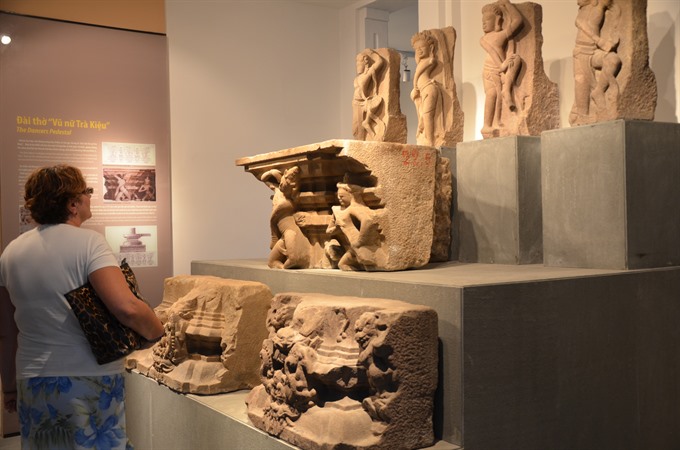
Rivalkingdom: A visitor looks at a corner of Trà Kiệu gallery of Cham culture.
After nearly two years of refurbishment, the Đà Nẵng Museum of Cham Sculpture has re-opened all galleries. Housing the largest collection of Chăm sculpture in the world, the museum preserves the art and history of the Kingdom of Champa that once flourished in now central Việt Nam. The museum has undergone several expansions and renovations since its founding in 1915.
The idea of building a museum to house Champa sculptures was initiated by Charles Lemire, a French Résident in central Việt Nam. In 1892, Lemire took 50 sculptures to the Tourane Garden, the present site of the museum. In 1893, he proposed that the colonial authorities establish a museum in Tourane (now Đà Nẵng), however, it was not until 1915, three years after his death, that the first structure was built.
Although construction finished in 1916, the museum, known as Musée de Tourane, was not opened until April 1919. The building, which initially displayed 236 objects, was designed by two French architects, Delaval and Auclair, with architectural elements based on drawings by Henri Parmentier, an architect and archaeologist working for the École Française d’Extrême-Orient (EFEO).
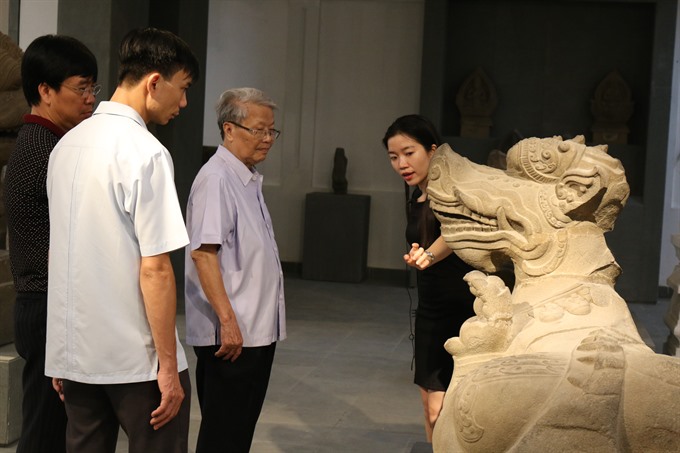
On visit: Fomer President Trần Đức Lương visits Chàm Museum. VNS Photos Lý Hòa Bình
Since the first display in 1919, more sculptures have been added to the museum collection following excavations by the EFEO, particularly those at Trà Kiệu (1927-1928) and Tháp Mẫm (1934). As a result of large finds in these locations, two lateral wings were attached to the original building. Parmentier directed the display and arranged the museum space into galleries of Mỹ Sơn, Trà Kiệu, Đồng Dương and Tháp Mẫm.
The connecting corridors housed sculptures from the provinces of Quảng Trị, Quảng Ngãi, Bình Định, and Kon Tum. On 11 March 1936, the museum was inaugurated in the presence of colonial authorities and EFEO scholars, and renamed Musée Henri Parmentier.
After the collapse of French Indochina, the Musée Henri Parmentier was transferred to the South Việt Nam administration. In 1963, it was renamed The Museum of Đà Nẵng.
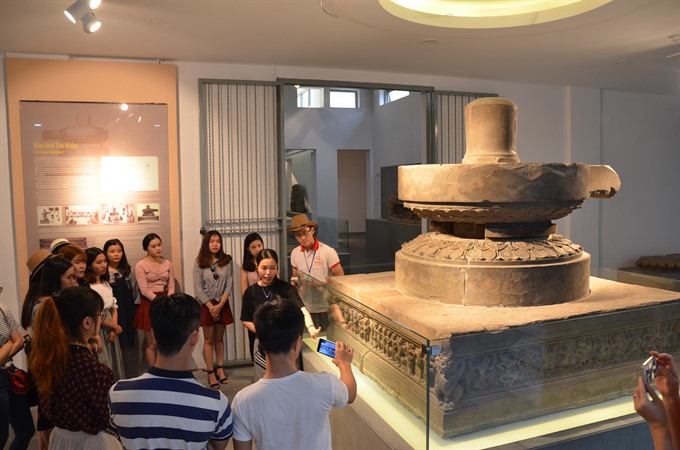
Hindu art: A view of Trà Kiệu Pedestal - The National Treasure of the Chàm Museum.
In 2007, this institution was divided into two independent units; one is the History Museum of Đà Nẵng and the other is Đà Nẵng Museum of Cham Sculpture.
From 1936 to 1975, the architectural layout of the museum remained unchanged, except for the addition of another building used as storage space. In 2002, a two-storey building was annexed to the back of the existing structure. The first floor displayed sculptures excavated after 1975 from the sites of Phú Hưng, An Mỹ, Chiên Đàn, Quá Giáng and Khuê Trung, while the second was designed for thematic exhibitions.
According to Võ Văn Thắng, director of the museum, another important renovation came through a project called Fonds de Solidarité Prioritaire-de Revalorisation du Patrimoine Muséographique Vietnamien (abbreviated as FSP). Under this, the museum circulation flows were directed to the four main collections of Trà Kiệu, Mỹ Sơn, Đồng Dương, and Tháp Mẫm, while other collections were displayed in auxiliary halls. The second floor of the two-storey building is for the collection of ethnology. Sculptures are placed on plinths and illuminated by a system of spotlights.
Some windows are blocked to control the lighting effects, whereas open space is designated high on the ceiling to make use of natural light and to keep the museum well ventilated. Within the framework of the FSP project, the galleries of Mỹ Sơn and Đồng Dương were selected for renovation and they were re-opened to the public in February, 2009.
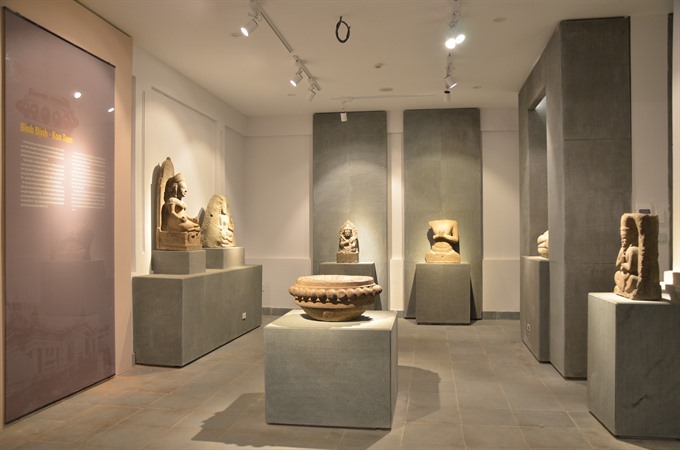
Ancient: Bình Định - Kontum Gallery.
“Expanded and renovated to house the expanding collection, the display has drawbacks,” Thắng said.
First, sculptures were fixed into museum walls or cement plinths from 1915 to 1936, thus their physical condition was damaged. Second, plinths and lighting inside the galleries were not consistent throughout the museum and did not properly highlight the sculptures on view. Third, visitors felt excluded while contemplating the exhibits due to inadequate captioning and information.
Furthermore, the layout of galleries did not create a harmonious flow in terms of stylistic development of Champa sculpture. Bottle-necks were also a serious problem in the galleries of Trà Kiệu and Tháp Mẫm where sculptures were densely exhibited, often impeding viewing by visitors.
Conforming to the display concept of the FSP project, the 2016-2017 refurbishment aims to overcome these shortcomings. Sculptures are displayed in galleries named after the sites where they were excavated, while still following an acceptable chronology. The refurbished building features new amenities including a reception hall, thematic exhibition rooms, visible storage, an education centre, auditorium, library, souvenir shop and cafeteria.
The total area of exhibition space is 1,755 square metres with 433 objects on display. The new circulation flow now starts from the reception hall introducing the history of the museum and Champa Kingdom, and continues through the main galleries of Trà Kiệu, Mỹ Sơn, Đồng Dương and Tháp Mẫm
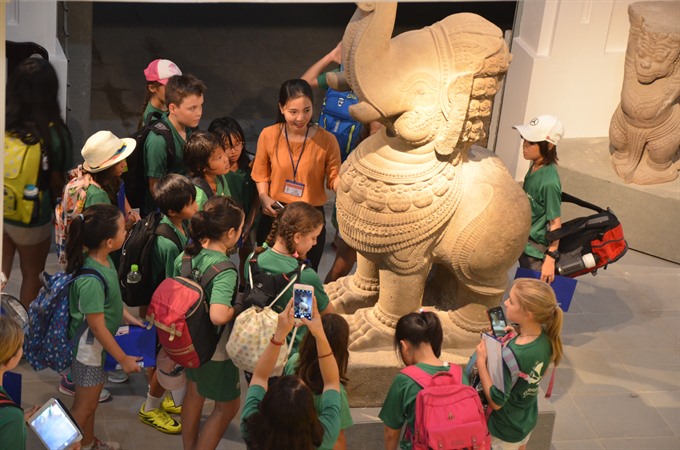
On tour: A study group from Green Shoots International School to Chàm Museum
The collections of Quảng Bình, Quảng Trị, Thừa Thiên – Huế, Đà Nẵng, Quảng Nam, Quảng Ngãi, Bình Định and Kon Tum are re-located in the two-storey building. Three new permanent exhibitions have opened, including “Champa Inscriptions”, “Sa Huỳnh – Champa Ceramics” and “The Cham People in Ninh Thuận”. Each gallery has introductory panels and object captions in both English and Vietnamese. Other means of interpretation such as audio guides, touch-screens and pamphlets are also offered to museum viewers, beside free guided tours.
When asked what he thought about the refurbished galleries, Peter Dixon, a retired Australian teacher who has worked as a volunteer in Đà Nẵng and a frequent visitor to the museum, said: “I appreciate the extra space the renovations allow. This provides an opportunity to consider each artefact in greater isolation. The installation of sensor lighting is an improvement, as well as being cost effective and environmentally friendly.”
From October 20 to November 15, the museum will stay open from 7.30am to 8pm every day. After the trial period, the museum hopes to maintain this late opening policy on selected days to attract more visitors, particularly tourists and local community. Due to the city’s hot weather, it would be comfortable to visit the museum in cooler hours. — VNS